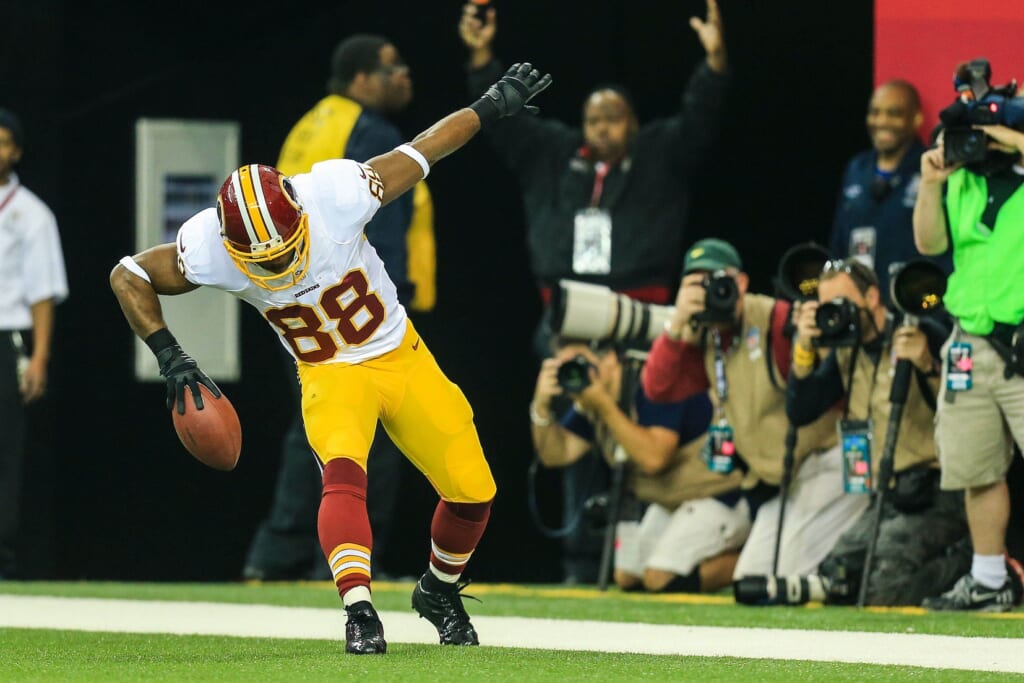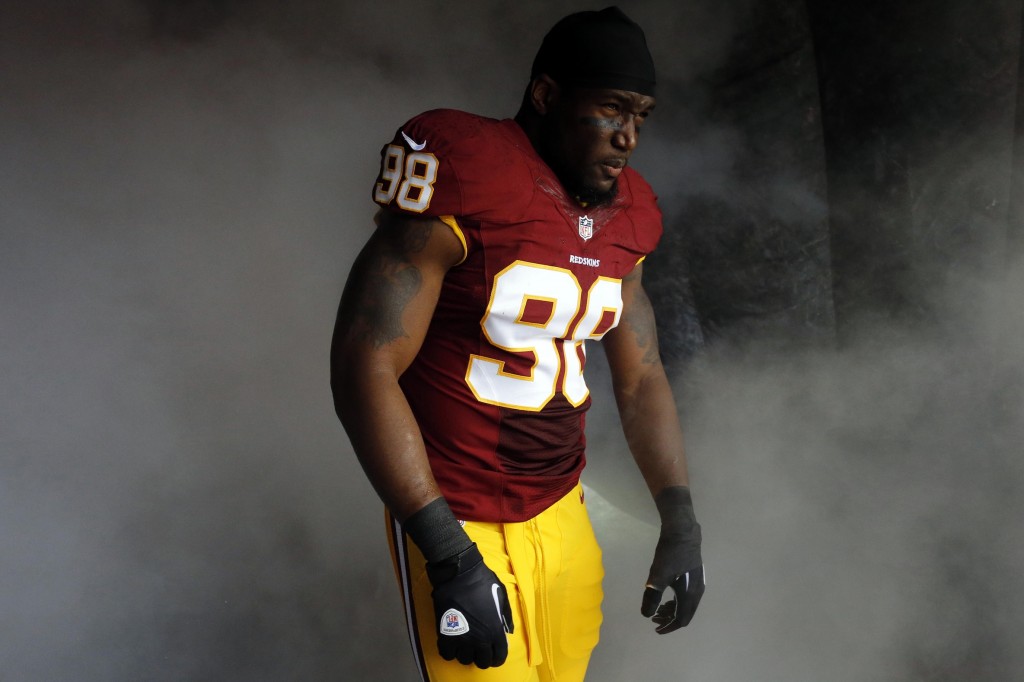
We have yet to find out the terms of the three-year contract that DeSean Jackson agreed to with the Washington Redskins on Tuesday night. All indications, however, is that it’s going to surpass the annual average that Eric Decker received from the New York Jets earlier this offseason.
On the surface, adding a No. 1 wide receiver to the mix with Pierre Garcon already on the roster, makes a ton of sense. They will give Robert Griffin III two 1,000-yard receivers on the outside, which is going to be huge as he attempts to come back from a disastrous 2013 campaign. Add youngsters Jordan Reed at tight end and Alfred Morris at running back and you have the makings of a dynamic offense in D.C.
Unfortunately, it’s my job to play the role of skeptic here for a bit. Garcon, who signed a five-year, $42.5 million contract back in 2012, is due nearly $30 million over the next three seasons with a total dead money hit of over $13 million. This means that Washington is likely to have to keep him around until after the 2015 season, at which point he’ll only cost $2.2 million in dead money.

The veteran put up the best statistical season of his career in 2013. He brought down a league high 114 passes for 1,346 yards and five touchdowns…all great numbers. Garcon was also targeted a league high 182 times and caught 62 percent of the passes thrown in his direction. All of these numbers promise to go down with Jackson now in the fold.
Does this indicate that Garcon isn’t worth the $9.7 million that is owed to him in 2014? Basic statistics won’t tell us. Rather, it’s all going to be about how he performs in the short term with the chances that he has.
The issue here is that Jackson is likely going to find himself at about the $8 million per season ranged with a minimum of two years worth of that guaranteed. If that’s the case, Washington’s looking at having to deal with a few different immediacies.
1) Spread that guaranteed money out over the course of all three years, at which point it will have to hang on to Jackson for the duration.
2) Give Jackson that guaranteed money upfront, which is hard to do considering that the Redskins have just $6.1 million guaranteed.
3) Backload the deal for the third and final season, at which point the Redskins could get out of Garcon’s deal.
DeSean Jackson hit the club with a D.C. rapper and would-be Redskins teammates http://t.co/2mEbVA1TWF
— For The Win (@forthewin) April 1, 2014
All three of these options leave something to be desired. Outside of the fact that No. 2 is nearly impossible, Washington doesn’t currently have the roster to compete with the big boys in the NFL. Handcuffing its salary cap with over $16 million tied to two receivers could be problematic moving forward. Spreading the guaranteed money out over the duration of the deal disables the Redskins ability to hit the market hard in coming seasons, even with expected hikes in the salary cap. Backloading the deal could be the best option, but that also limits how Washington can go out there and add to a roster that’s just not up to par with the top guys in the NFC.
It’s reasonable to expect that the third option listed above is the best. That would represent Washington hedging its bets that Jackson will 1) be the same player in year three as he was this past season, 2) won’t moan about an extension two years from now and 3) doesn’t prove to be a distraction on and off the field.
Looking back at Washington’s talent level and young core for a second here. All four of Washington’s key core players are set to become free agents either following the 2014 season or the year after that.

Brian Orakpo: Currently expected to play under the franchise tag in 2014. Without a ton of salary cap flexibility, it might be hard for Washington to come to some sort of a long-term agreement with the pass rusher.
Trent Williams: This Pro Bowl blind-side protector is one of the most important players on the Redskins roster. He’s needed in order to help protect Robert Griffin III’s blindside and keep him upright for years to come. Williams is set to make $14.2 million in the final year of his contract next season. It goes without saying that the Redskins will have to pay him some serious dough on a long-term deal.
Robert Griffin III: If RGIII plays anywhere near like he did during an injury-plagued 2013 campaign, Washington will have bigger issues at hand moving forward. If he plays at or near his rookie level over the next season or two, it means paying the former No. 2 overall pick franchise-type money. In any event, there is a something to be said about a rock and hard place here. It’ll be intriguing to see how this situation plays out moving forward.
Alfred Morris: Running backs haven’t been in high demand over the past couple offseasons. Though it must be noted that none of these running backs have had the combination of previous success and fresh legs that Morris will likely bring to the table when he hits the open market after the 2015 season.
Having all these contracts come up at nearly the same time is something almost every team in the NFL has to deal with, even the upper-echelon units around the league. Heck, the Seattle Seahawks and San Francisco 49ers are bound to have to deal with similar issues.
What separates those two from Washington is that they already have a solid core under contract for the long term, possess more salary cap flexibility moving forward, have drafted better than Washington, and boast a ton more depth. They can afford to lose a young player or two without taking much of a step back.
Unfortunately for the Redskins, they can’t. They’re going to need to keep everyone on board while still adding quality talent to areas of perceived weakness. And there are a lot of weaknesses on this roster.
This signing is one that a true contender normally makes to get that final piece of the puzzle. Washington surely isn’t that close. In fact, it may hinder the Redskins ability to build such a contender down the road.
Time will tell whether this is yet another ill-fated move by an organization that has made so many of them in the past under Daniel Snyder. Even if it isn’t fans in D.C. should take a step back. At best, Washington is merely a playoff contender in a weak division. At worst, this could come back to haunt the team a great deal moving forward.
All contract information provided by Spotrac.
Photo: Kim Klement, USA Today